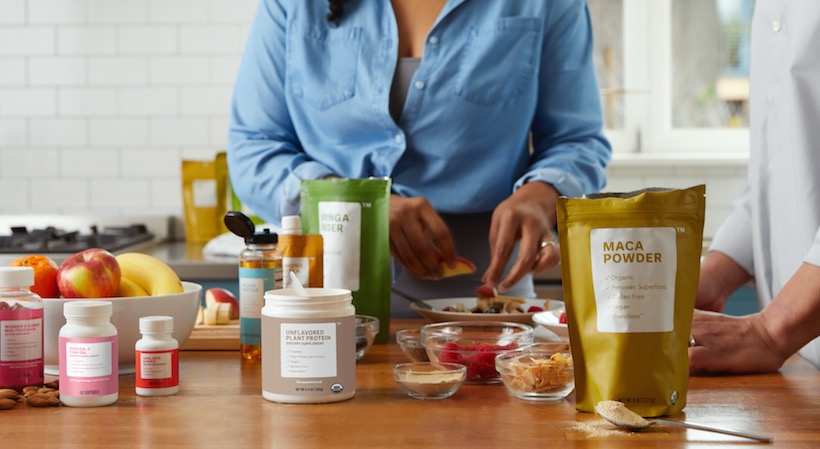There’s never been a better time to launch a health food product. In 2018, organic food sales in the U.S. rose 5.9 percent. Additionally, the global gluten-free market is slated to reach $12.5 billion by 2024. While we’ve never seen such thirst for healthy products, that doesn’t make getting a health food product to market any easier.
We asked experts in both small business and the health food market to share strategies for success, as well as lessons learned.
StartupNation exclusive discounts and savings on Dell products and accessories: Learn more here
Don’t underestimate your costs
Kaaryn Simmons, who runs the Columbia Harlem SBDC, says a mistake she often sees health food entrepreneurs make is poorly pricing their products:
“For entrepreneurs making food products, they often underestimate the cost of their ingredients and they almost never include labor, packaging or logistics (transportation).”
Calculating ingredient costs may be simple enough, but don’t forget other expenses that you need to wrap into your pricing, including:
- Marketing
- Labor
- Utilities
- Packaging
- Shipping
- Licensing
And of course, you’ll want to make a profit!
You can expect to see a gross profit margin between 35 percent and 45 percent if you sell in traditional grocery stores. Adding your intended profit margin onto your costs can give you your pricing.
Be where your customers are
When you initially launch your health food product, you may not end up on the shelves of Whole Foods. If that’s your goal, build toward it by showing up where your customers are looking for products like yours in order to build brand awareness.
Caroline Egbelu, business manager for Health Enhanced Foods, Inc., a specialty flour company, says the company introduces new products to the market by meeting target customers at their place of convenience:
“We do that by attending events that our target customers attend to exhibit our products. For example, during summer months, we exhibit at conferences, camp meetings, farmers’ markets, and organizational meetings. This is where we introduce new products and recipes and get immediate feedback from target users of our products.”
Armed with that feedback, she says, the company intensifies the process of getting its products to the mainstream market through distributors and retail stores.
Invest in liability insurance
Insurance is usually the last thing any business owner wants to think about, but liability insurance is particularly essential for entrepreneurs in the food industry, according to Simmons.
What would happen if consumers got sick from one of the ingredients in your product that you bought from a supplier? Even if it’s not directly your fault, you still could be sued. That’s where insurance comes into play.
“Because food business owners don’t have control of their entire supply chain, it is especially important for producers to protect themselves from liability,” Simmons said.
Related: How Entrepreneurs are Shaping the Future of the Food Industry
Pay attention to labeling requirements
The health food industry is one with strict labeling requirements in general; but be aware that if you sell through Amazon or other online retailers, you may also have additional requirements for your packaging labels. Not meeting them can cost you, as it did Egbelu’s company.
After printing tens of thousands of bags per product (to bring the cost per bag down), the company realized it didn’t meet some of the labeling requirements it needed to.
“We found ourselves unable to post our products on Amazon, Facebook and social media because the platform algorithms would flag some of the words we printed on our packaging and that we used to describe our products.”
The moral of the story? Check labeling requirements before you print, or plan to create separate labels for each channel if necessary, though as a startup, that may be cost-prohibitive.
Check out the competition
Knowing what your competition is doing can provide you the insight to make smarter decisions, especially when it comes to pricing.
Egbelu said her company mistakenly assumed that its target market would pay whatever it asked for healthier and higher-quality products:
“We found that even though customers loved our products, they were reluctant to buy them at prices higher than the competition.”
Knowing what the competition charges, you have two options: charge less (if you can afford to and still make a profit) or offer more value.
Plan your financing needs in advance
Even if you launch your health food business with money in the bank, there will likely come a day when you need financing in order to grow your business. Consider what you would do if Walmart ordered a million units of your product. Do you have the resources to cover the expenses involved?
Not all business financing has to be a loan. You could set up supplier financing with your vendors to buy a little time between receiving inventory and paying your invoices. This can help you build your business credit as well, if the vendor reports to business credit bureaus.
You could also take out a business credit card to help you buy what you need while keeping cash flowing.
Sign Up: Receive the StartupNation newsletter!
Find support
While your local Small Business Development Center (SBDC) or SCORE office can help you with business planning and resources, there are other, food-specific organizations that can help, as well. Simmons recommends the Specialty Food Association, a national organization that provides education programs and industry events.
With the above tips, you’ll be extra equipped to launch your health food product the right way, and get it on store shelves in no time.






